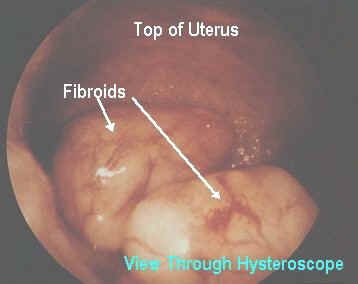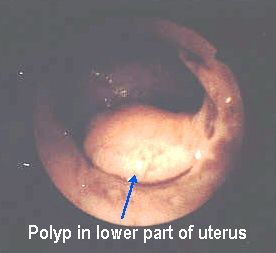Hysteroscopy FAQ
Hysteroscopy uses a hysteroscope, which is a thin telescope that is inserted through the cervix into the uterus. Modern hysteroscopes are so thin that they can fit through the cervix with minimal or no dilation.
Visit Dr. Indman's award winning web sites: Alternatives in Gynecology and Fibroid Medical Center of Northern California
Hysteroscopy uses a hysteroscope, which is a thin telescope that is inserted through the cervix into the uterus. Modern hysteroscopes are so thin that they can fit through the cervix with minimal or no dilation. Although hysteroscopy dates back to 1869, gynecologists were slow to adopt hysteroscopy. Because the inside of the uterus is a potential cavity, like a collapsed airdome, it is necessary to fill (distend) it with either a liquid or a gas (carbon dioxide) in order to see. Diagnostic hysteroscopy and simple operative hysteroscopy can usually be done in an office setting. More complex operative hysteroscopy procedures are done in an operating room setting.

This is a view through a hysteroscope during office hysteroscopy of the inside of a uterus with two fibroids (myomas) on the back wall. The upper portion of the photograph shows the top of the uterus, which is normal. Fibroids like this can cause severe cramping (dysmenorrhea), heavy menstrual periods (menorrhagia) and bleeding between periods (metrorrhagia.) This was quickly and accurately diagnosed by hysteroscopy.
These myomas can be removed using a special kind of hysteroscope called a resectoscope.

This photograph also taken during office hysteroscopy shows a polyp in the lower part of the uterus. This type of polyp often causes bleeding between periods and is easily removed in the office. Again, office hysteroscopy allowed quick and accurate diagnosis of the cause of abnormal bleeding. The polyp was removed by simple operative hysteroscopy during the same visit.
Unless a women has major medical problems, I do diagnostic hysteroscopy in my office. I numb the cervix (this is easily done and rarely uncomfortable.) I attach a video camera to the hysteroscope, so my patient can also see, and then insert the hysteroscope into the uterus under direct vision while using either saline or carbon dioxide to fill the uterus. Usually this causes mild cramping. We then can look for fibroids, polyps, and other problems that may be causing bleeding. This often takes about a minute or two. The hysteroscope is removed. A small plastic tube may be used to take a sample of the lining of the uterus. That's it!
Isn't this too painful to do in the office?
By being very gentle, and using local anesthesia, there is usually minimal discomfort during hysteroscopy. Most women are able to get up and return to their normal activities immediately. If someone is very anxious, it is possible to give a short acting narcotic intravenously. This makes it very unlikely that the procedure will be uncomfortable.
What is Operative Hysteroscopy?
During diagnostic hysteroscopy the hysteroscope is used just to observe the endometrial cavity (inside of the uterus.) During operative hysteroscopy a type of hysteroscope is used that has channels in which it is possible to insert very thin instruments. These instruments can be used to remove polyps, to cut adhesions, and do other procedures. With the development of better and smaller instruments, I find that I am able to remove some polyps in addition to doing other procedures that used to require a full operating room. In many situations, operative hysteroscopy may offer an alternative to hysterectomy.
How is the Resectoscope different than a regular hysteroscope?
The resectoscope has been used for male prostate surgery for over 50 years. It has been modified so it can be used inside the uterus. The resectoscope is a hysteroscope with a built in wire loop (or other shape device) that uses high-frequency electrical current to cut or coagulate tissue. The resectoscope has revolutionized surgery inside the uterus.
Copyright © 1998 Paul D. Indman, M.D.
